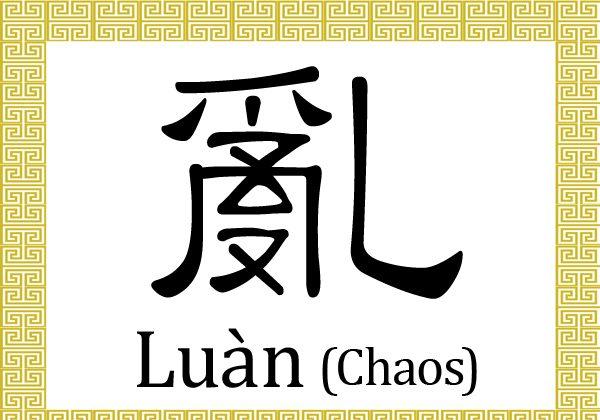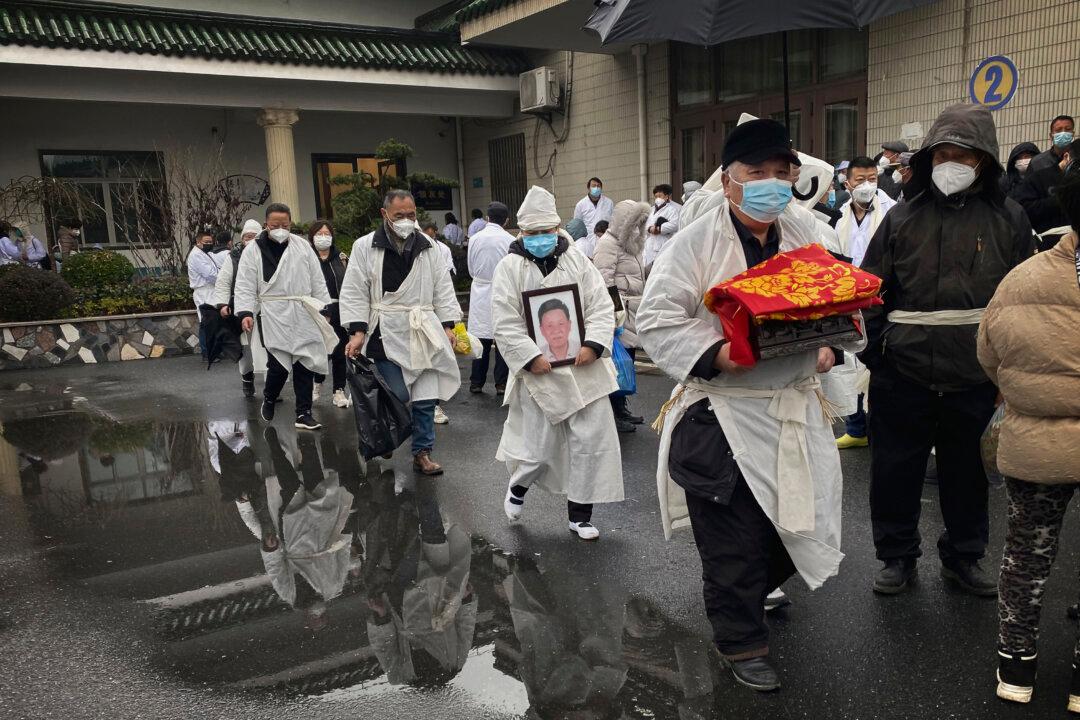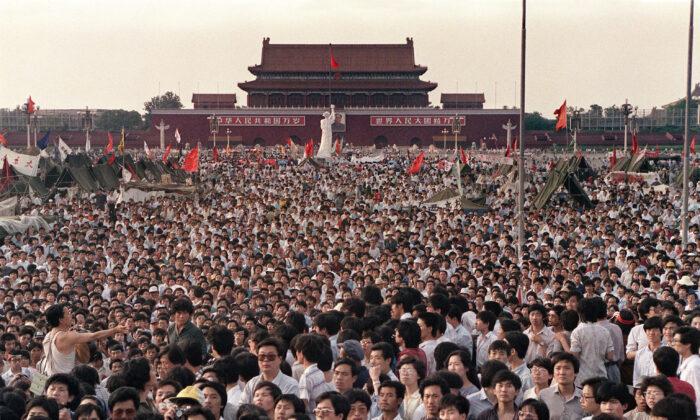The character 亂 (luan) first appeared as bronze script cast on “ding,” or tripod cauldrons, made during the Western Zhou Dynasty.
The left side of the character shows its meaning—silk threads tangled on a loom. Later, the right side, the radical 乚 (yǐ), meaning second or twice over, was added to the character to signify more tangled silk threads to better depict and put more emphasis on chaos.
Its final shape in the Seal script is in a calligraphic style that is closest to its original shape on the Western Zhou cauldrons.
The character 亂 can function as many parts of speech. As an adjective, it describes something messy or chaotic, such as in the character combinations 亂兵 (luàn bīng), undisciplined troops, and 亂世 (luàn shì), troubled times or chaotic era.
As a verb, it means to make something messy. For example, as in the Confucian philosopher Xun Zi’s quote “酒亂其神也 (jiǔ luàn jī shén yě),” which translates as “alcohol messes up the mind.”
As a noun, it can mean chaos or unrest, as in 亂子 (luànzi), disorder or disturbance, or 戰亂 (zhàn luàn), chaos caused by war.
As an adverb, it means doing something in a messy or random way, such as in 亂說 (luàn shuō) to speak nonsense or randomly, or to gossip.





Friends Read Free